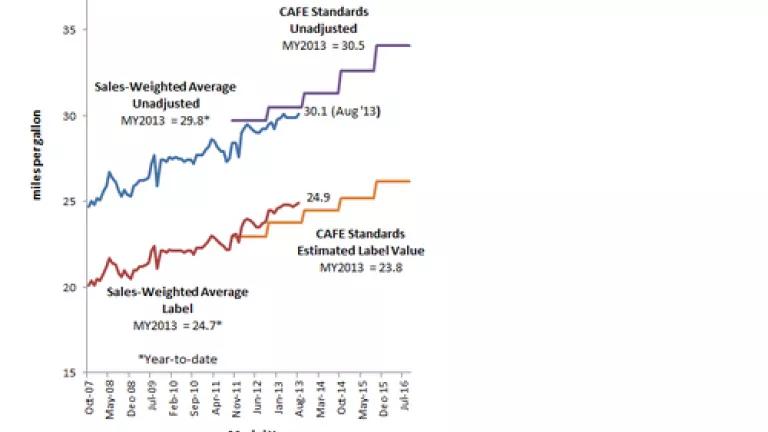
With August setting another record for fuel efficiency, the auto industry is ahead of regulator's original expectation for model year 2013. The auto industry is clearly on track to meet the 2016 fuel economy standards and the longer-term, 2025 target to double fuel efficiency to 54.5 mpg. Year-to-date fuel economy of 24.7 mpg easily beats the regulator's original prediction that the standards would result in 23.8 mpg.
According to research by Michael Sivak and Brandon Schoettle of the University of Michigan, the average window sticker or label value in August hit new high of 24.9 mpg, up 1.2 mpg from the same month last year and an uptick of 0.1 mpg from July. The year-to-date level of 24.7 mpg will likely be similar to the final level for model year 2013 since the new model year starts in October. The unadjusted or certification fuel economy values for new auto sales, show a similar trend.
When regulators finalized the current round of standards for model years 2012-16 in 2010, they set a standard equivalent to 30.5 mpg for model year 2013 when tested on the certification test cycle. When adjusted for the gap between certification test cycle and window sticker values and the use of credits, regulators estimated the new standard would result in a 2013 window sticker value that is equivalent to 23.8 mpg. This is 0.9 mpg lower than the 24.7 mpg year-to-date actual fuel economy level.
The 23.8 mpg is based on the regulator's estimate of an “achieved” certification test level of 29.7 mpg for model year 2013. Assuming a 20% gap, I estimate the expected average window sticker level to be 23.8 mpg. Regulators cannot predict the exact fuel economy level because of program flexibilities. Ratio of cars to light trucks sales, the average size of vehicles sold, the use of flex fuel and over credits, all will impact the fleet fuel economy levels actually achieved.
High gas prices and increased fuel economy standards has unleashed tremendous innovation in the auto industry. More attractive fuel-efficient offerings across their lineup helped boost auto sales to their highest levels in past seven years. Greater innovation and means a healthier, more competitive auto industry.
